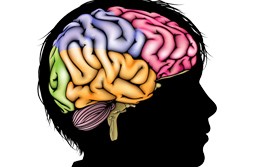Testosterone and the Teenage Brain

By Kevin Ritchart
Scientists are beginning to understand the role testosterone plays in the maturity and decision-making of the adolescent brain.
When an adult brain processes an emotion, multiple areas of the brain are activated, beginning with the limbic system. A small area located deep within the brain, the limbic system is the spot where emotional reactions originate. In the adult brain, the prefrontal cortex, which can be found in the front of the brain right behind the forehead, also plays a key role in keeping emotional reactions in check.
The brain of a teenager can’t simply be categorized as a larger version of a child’s brain or a smaller version of an adult’s. As children grow, their brains develop, and different areas of the brain form connections or disconnect from one another.
The amygdala is the area of the limbic system that controls emotions like fear. Adolescents tend to activate the amygdala more often when faced with emotional situations, according to neuroscientist Anna Tyborowska of Radboud University in the Netherlands.
Tyborowska was part of a team of scientists who recruited a group of 14-year-old boys and girls for a brain study. Test subjects were placed inside a functional magnetic resonance imaging (fMRI) machine so the scientists could measure blood flow in the brain while the subjects performed certain tasks.
The teens were given a joystick and asked to push the lever away from them when they saw an angry face and pull it toward them when they saw a happy face. Then researchers switched the responses, asking the subjects to pull the joystick toward them when they saw an angry face and push it away when presented with a happy one.
“Approaching something threatening is an unnatural response that requires self-control,” Tyborowska said.
As part of the study, researchers also measured levels of testosterone, a hormone that rises in both males and females during puberty. Testosterone is partly responsible for reorganizing the brain and controlling the development of different structures within the brain throughout adolescence.
When placed in situations where emotional control is required, teens with less testosterone rely on their limbic systems. This makes their brain activity more akin to that of a younger child. Conversely, teens with higher levels of testosterone take a more adult approach when it comes to their emotions, relying more on the prefrontal cortex.
Though every child — and every brain — is unique, scientists are learning more about the involvement of testosterone in adolescent emotional maturity with each new study they perform.
CLASSROOM DISCUSSION
- Aside from fear and anger, what are some other extreme emotional responses that could trigger the amygdala?
- What do you think scientists would find if they performed a similar study on kids younger than 14? Older than 14?
VOCABULARY
- limbic system
- prefrontal cortex
- amygdala
- testosterone

